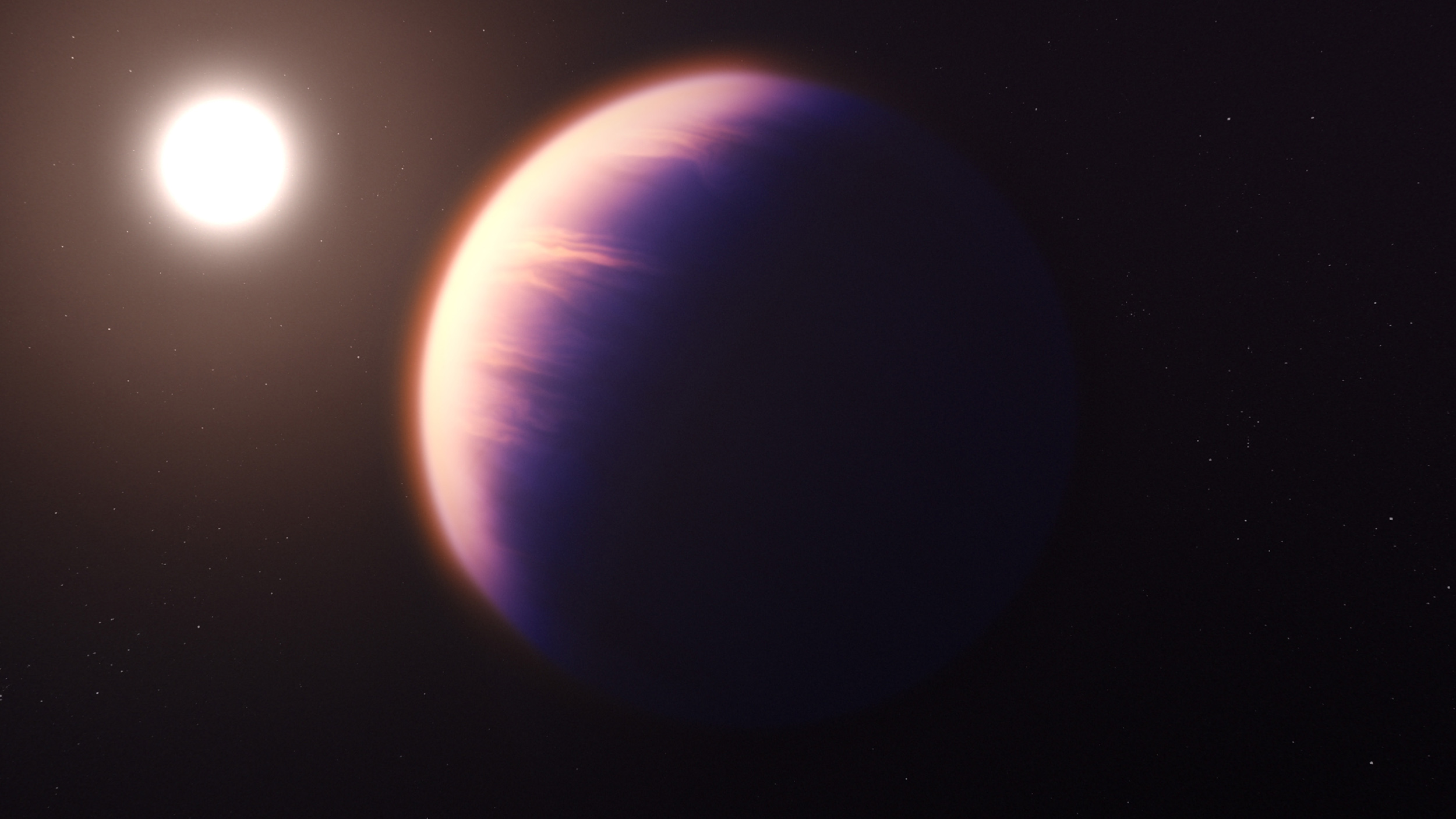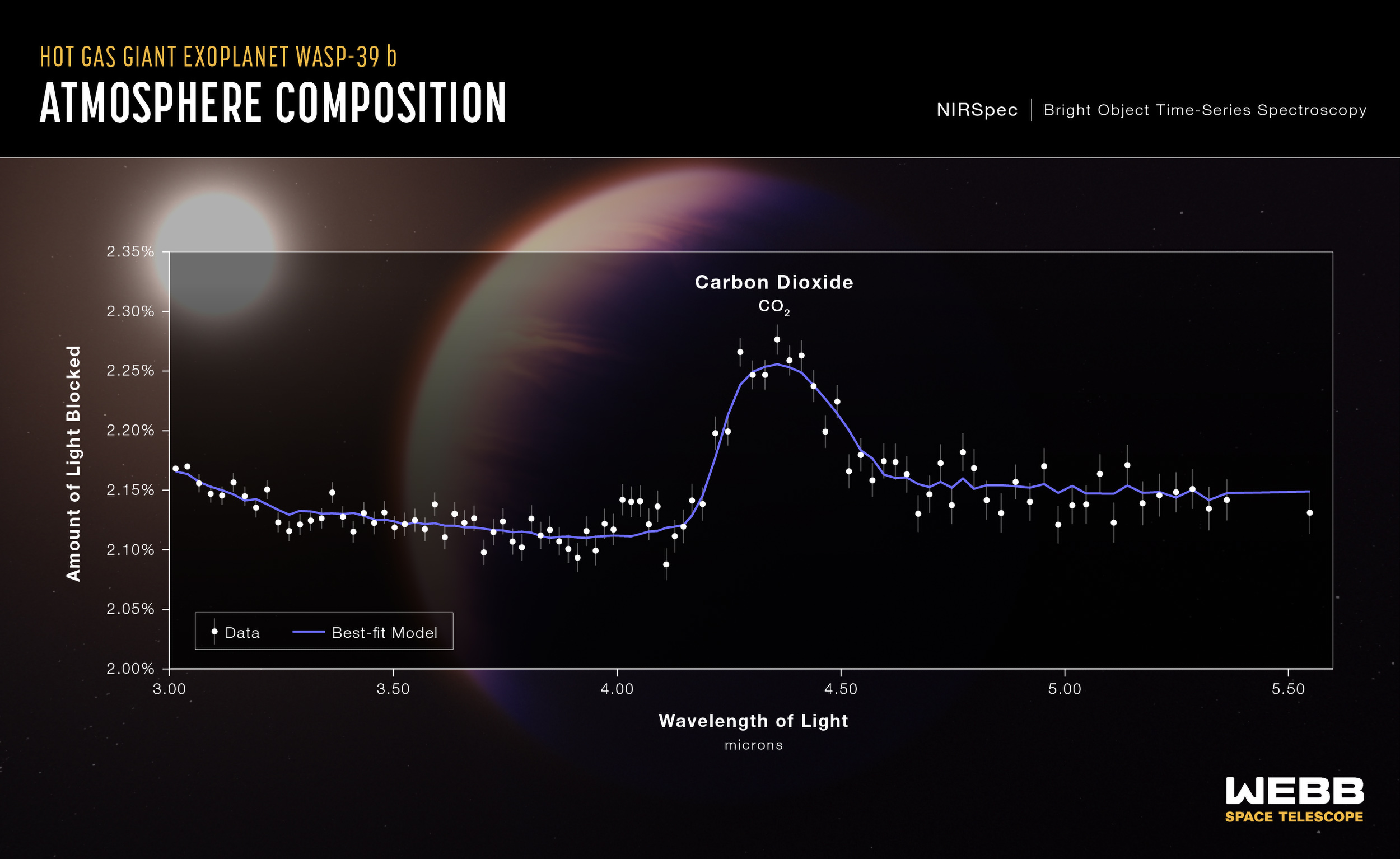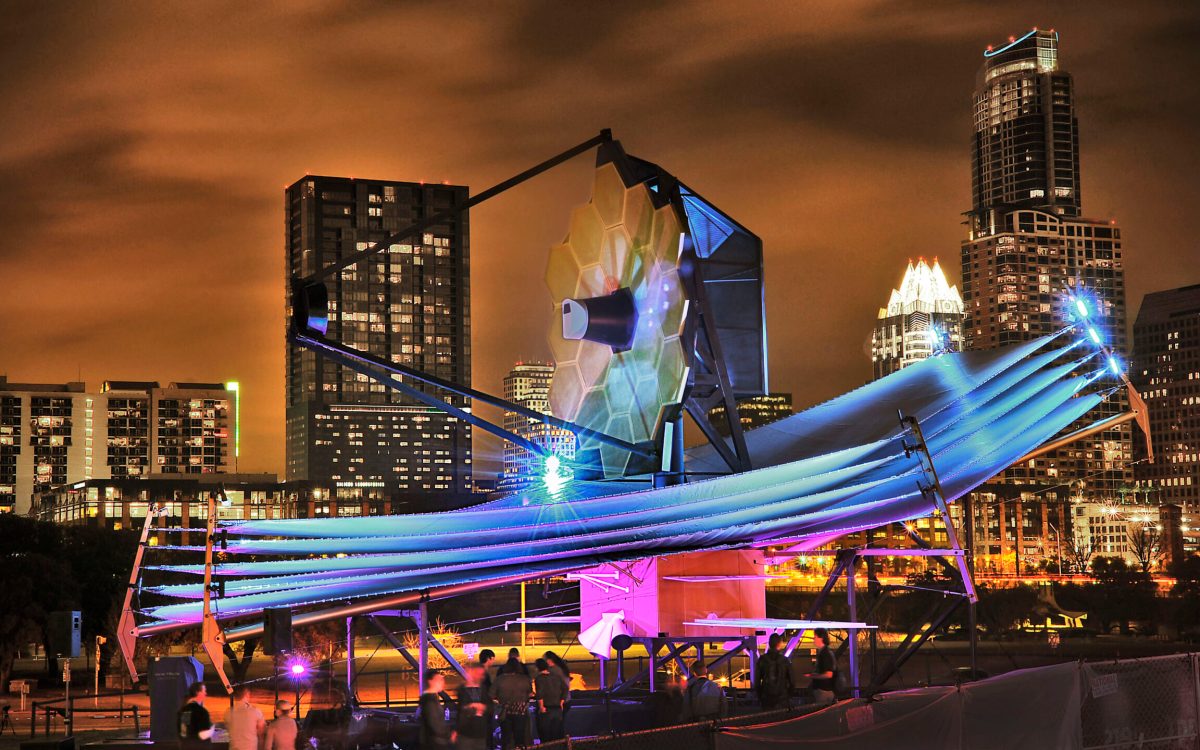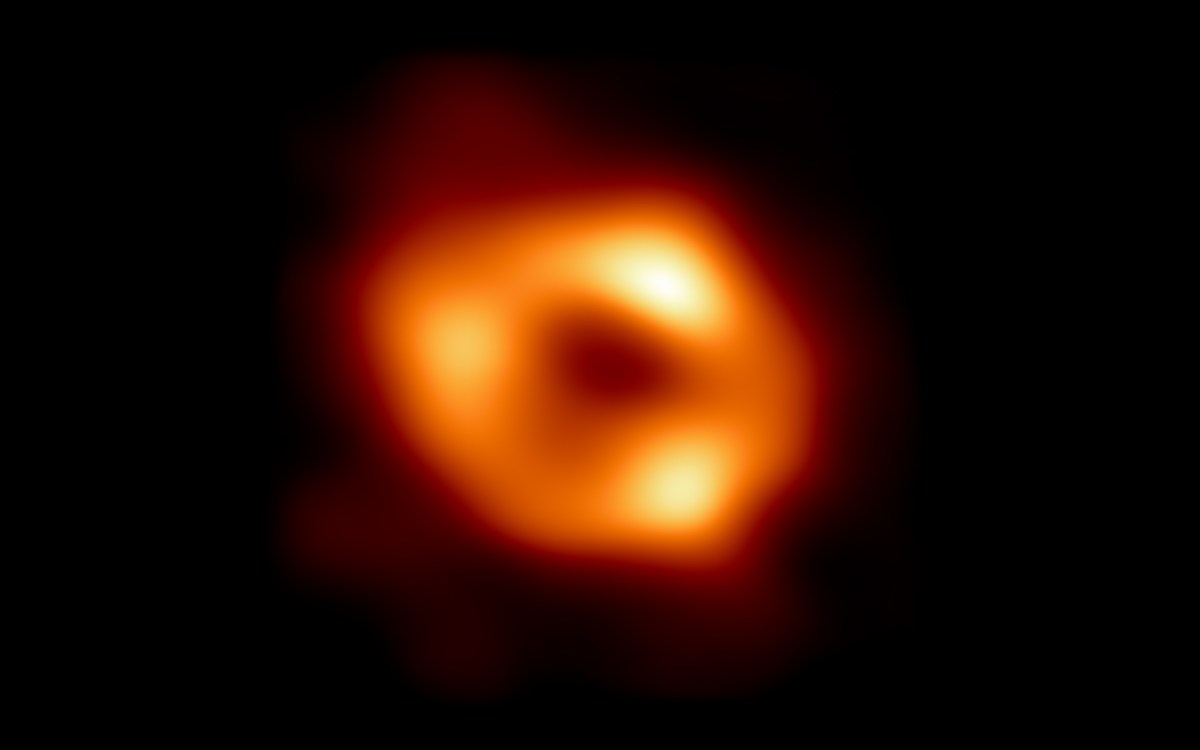
Illustration shows what the exoplanet could look like, based on current data.
NASA, ESA, CSA, Joseph Olmsted
Astronomers see carbon dioxide on planet outside solar system for first time
Discovery powered by James Webb Space Telescope
Scientists using NASA’s James Webb Space Telescope have captured definitive evidence of carbon dioxide in the atmosphere of a planet beyond our solar system.
The discovery, published in the journal Nature, gives scientists hope the powerful telescope, also known as JWST, will provide new insights on the composition and formation of exoplanets.
“Such a clear detection of carbon dioxide in this planet is exciting because it indicates that we will also be able to detect CO2 in the atmospheres of smaller, terrestrial planets,” said Mercedes López-Morales of the Center for Astrophysics | Harvard & Smithsonian.
López-Morales is one of four Harvard astrophysicists who worked on the study as part of a team of some 100 scientists. James Kirk, single-handedly performed one of the four analyses the researchers ran on data from the telescope.
“This is the first time we have seen CO2 in an exoplanet atmosphere, which has incredibly exciting implications for studying carbon and oxygen chemistry in these planets, and in turn on how they form and evolve,” Kirk said.
The carbon dioxide molecules were detected in the atmosphere of “WASP-39 b,” a gas giant orbiting a sun-like star 700 light-years away. Scientists observed the exoplanet on July 10 using the telescope’s Near-Infrared Spectrograph.

Data captured by James Webb Space Telescope’s Near-Infrared Spectrograph on July 10.
NASA, ESA, CSA, Leah Hustak (STScI), Joseph Olmsted (STScI)
WASP-39 b was already on scientists’ radar. In 2018 NASA’s Spitzer Space Telescope revealed hints of carbon dioxide in its atmosphere. Previous observations from other telescopes had revealed water vapor, sodium, and potassium.
Thus the exoplanet was the ideal candidate for a follow-up using the new and improved JWST, said López-Morales.
Another factor: WASP-39 b is a transiting planet. During a transit, some of the starlight is eclipsed by the planet completely, causing overall dimming, and some is transmitted through the atmosphere. The atmosphere filters out some colors more than others depending on what it is made of, how thick it is, and whether there are clouds. Because different gases absorb different combinations of colors, researchers can analyze small differences in brightness of the transmitted light across a spectrum of wavelengths to determine the exact make-up of an atmosphere.
In this case, the resulting spectrum scientists obtained was significant: the first clear, detailed, indisputable evidence for carbon dioxide ever detected in a planet outside our solar system.
“The remarkably strong signal is a testament to [JWST’s] exquisite precision and revolutionary wavelength range, and demonstrates how much we stand to learn from this awesome observatory,” Kirk said.
Additional CfA co-authors on the new study are Diana Powell and Kevin Ortiz Ceballos.








